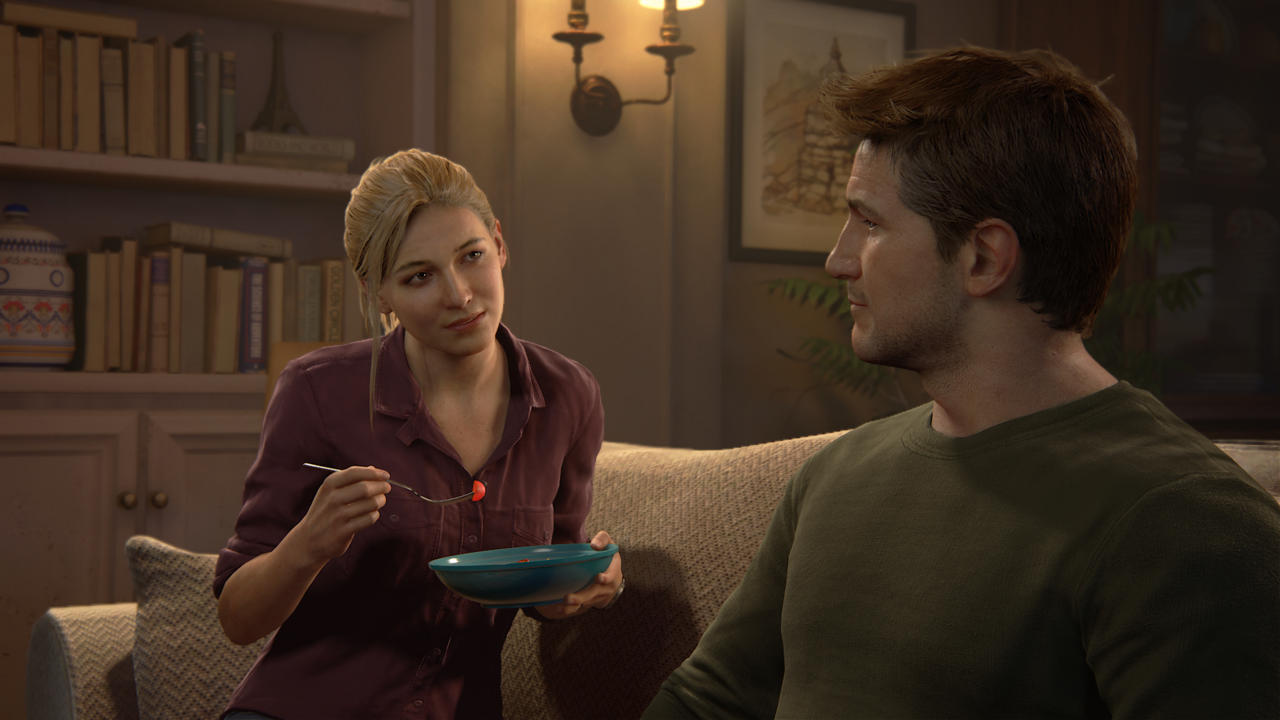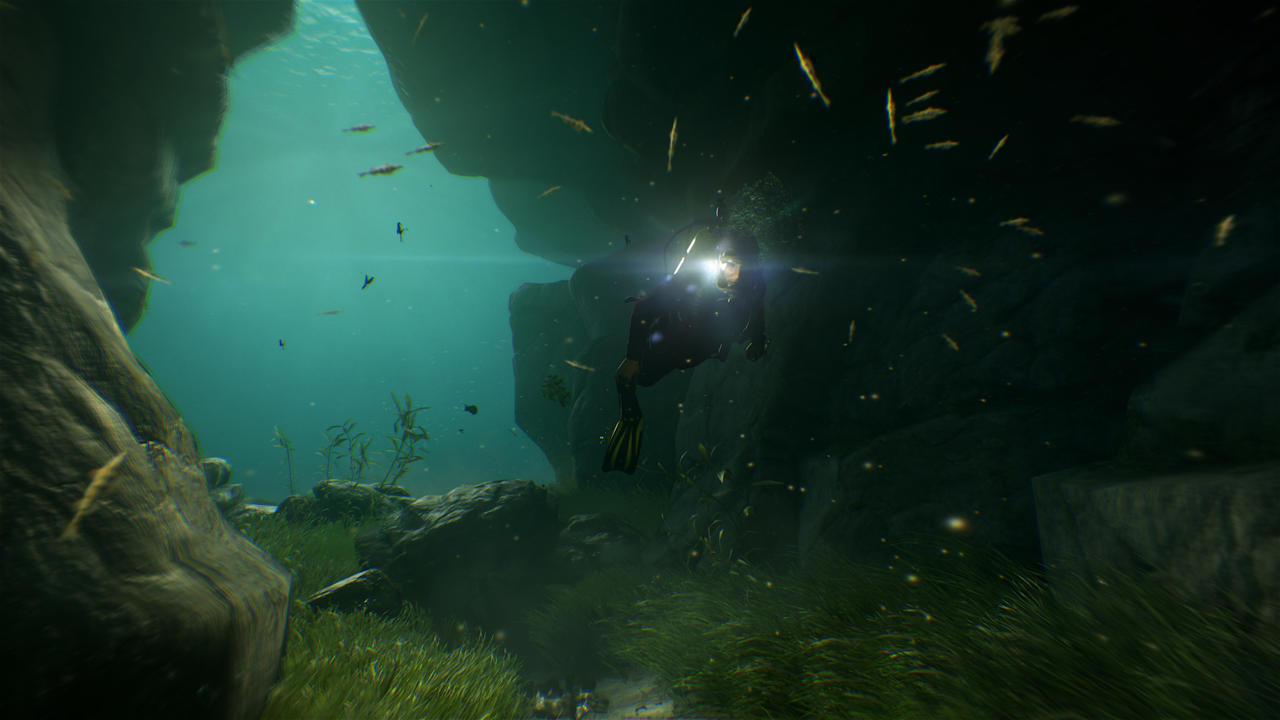"We receive the due reward of our deeds." So reads the inscription on an artifact discovered in the early hours of Uncharted 4: A Thief's End. It's a passage from the Bible, spoken by Saint Dismas, a man crucified on the same day as Jesus. He spent years robbing and murdering innocent people before being sentenced to death for his crimes. And with those last words of revelation, Dismas earned the title of the Penitent Thief.
This anecdote sets the tone for a powerful game about loss, betrayal, regret, and redemption. In both its momentous set pieces and its intimate, personal moments, Uncharted 4 drives its narrative forward with a rare understanding of its characters, its world, and the gameplay tying them all together. It's a stunning combination of disparate parts. It's a breathtaking marvel of a game.
By this point in the series, developer Naughty Dog has led us across the globe in search of famous treasures from equally famous legends: we unearthed El Dorado in the Amazon rainforest, found the Cintamani Stone deep in the Himalayas, and entered Iram of the Pillars, a sandswept city with a religious history of its own. In Uncharted 4, however, we find protagonist Nathan Drake leading a quiet life with freelance journalist Elena Fisher, who happens to be his wife. They live in New Orleans. They have a three-bedroom house. They play video games together.
But this all changes with the return of Nathan's older brother Sam, who was presumed dead for 15 years. Not only is he alive and well, but he's fallen in with criminals, and needs help paying a debt. He also has a lead on one of history's greatest treasures: the loot of the pirate Henry Avery, which the brothers have sought since their early days of treasure hunting. Now, with Nathan forced out of his calm life, they set off to chase their elusive white whale.

Sam's arrival not only upends Nathan's newfound domestication, but complicates his emotional life as well. Uncharted 4 gives us insight into his past, and the way it shaped his psyche: how he despises authority; how he uses humor as a shield; how he long ago accepted violence as a justifiable means to an end. Uncharted 4 tells this story with affection, showing an expert attention to detail in the way Nathan's voice falters when discussing his childhood, or how he stares at Elena when she's not looking. These details are painfully human. They bring the characters to life.
This nuanced take on Nathan's personality is reflected in Uncharted 4's gameplay, too. As with previous titles, Uncharted 4 revolves around third-person combat, climbing, and puzzle-solving. But, unlike its predecessors, this game often lets you sneak past enemy soldiers without doing any harm at all. This is a clear influence from The Last of Us, developer Naughty Dog's darker take on a third-person adventure. Stealth requires a patient, measured approach--but it feeds into the idea of a more reserved Nathan. Uncharted 4's action flows seamlessly alongside its narrative. It's a fluid, believable experience when it all comes together.
There are minor mechanical problems: the cover mechanic can send you to the wrong obstacle or wall in the middle of firefights, and rarely, Nathan will grab the wrong ledge when climbing. But these observations wash away within the grand scheme of things. There's always something incredible around the corner to erase the momentary annoyances.
Uncharted 4's action flows seamlessly along with its narrative.
The game borrows from The Last of Us in terms of structure as well. Much like its cousin, Uncharted 4 embraces a more open approach with much of its level design. There are small sandboxes where you climb towers, learn the layout, mark enemies, and choose to fight through them, or circumvent the group in the interest of a quiet escape. These areas would hurt the pace of a lesser game, but Uncharted 4 keeps tension alive even in its calculated moments, transitioning from open areas to action sequences without halting the momentum.
Speaking of: Uncharted 4's set-pieces are the best in the series, and among the best-coordinated stunts in the medium. There's a heist in Tuscany. There's an acrobatic escape along the cliffs of Scotland. There's a chase through a busy marketplace, and it opens onto farmland as you leap between trucks, slide through the mud, and crash through shacks in the Madagascar countryside. Just when you think Uncharted 4 might settle into a steady rhythm, it throws something new at you with high velocity and incredible power.

These sequences give you agency, but also enough guidance to maintain the euphoric rush of a car chase without constantly dying. I'm reminded of Half-Life 2's escape from City 17, where you sprint through apartments and over rooftops, controlling your character while the game directs you without sacrificing tension in the process.
The key difference with Uncharted 4 is how it directs you with its camera and lighting, guiding you to the correct ledge or doorway or crumbling wall as you leap through explosions and plumes of smoke. Audio cues also aid you--characters shout over the din of gunfire, telling you when to fight and when to keep running. The dialogue makes sense within the moment.
And then there's the presentation of it all. The cinematography, both in-game and during cutscenes, amplifies the wonder of this gorgeous world. It's not enough to call the jungles lush. They're vibrant. It's not enough to call the game's version of Scotland vast. It's majestic. There's also incredible animation at play, and it sets a new watermark for games in the way it can illustrate subtle emotions like distrust and yearning.
Sweeping camera shots and intimate close-ups tie the characters to the beautiful locales, as Drake gazes toward mythical places he only dreamed of as a kid. Uncharted 4 doesn't root its visuals in the hues of realism, but rather, paints the world as it might look to someone intent on exploring every inch of it--someone intoxicated by the prospect of adventure.
Uncharted 4's cinematography, both in cutscenes and out, amplifies the wonder of its gorgeous world.
Uncharted 4's multiplayer, though, ditches grounded storytelling in favor of all-out chaos: Nathan Drake clones swing from grappling hooks. Victor Sullivans pistol-whip each other. The villains of past Uncharted games lob grenades and fire RPGs and beat one another into a pulp.
This all plays out in multiplayer mode staples such as team deathmatch and zone control. But then there are Mysticals--attacks that make use of the artifacts we've become familiar with throughout the series. El Dorado summons aggressive spectres to attack your foes, the Cintamani Stone revives fallen teammates, and the Djinn lets you teleport short distances, blinking from spot to spot for a tactical advantage. In addition to these fantastical elements, you can earn gold through kills and revives, and find it scattered across multiplayer maps. It lets you add Mysticals to your inventory, but also lets you summon AI snipers and medics to aid your team's efforts. Uncharted 4's multiplayer exhibits the necessary creativity to elevate its already fluid third-person mechanics.
But although the multiplayer works well, and features a progression system that can keep you playing past your first few matches, it is not the primary draw.

The draw of Uncharted 4 is its remarkable single-player journey. How each of its parts feeds into the same cohesive whole. This is a narrative that continues in its gameplay, as Nathan places a reassuring hand on his brother's shoulder, or mutters a joke in Elena's ear. Uncharted 4 is so meticulous, you get the sense that its characters are thinking things we'll never hear out loud. "We have a lot of ground to cover," one person says. Is that in reference to the journey, or the first uncertain step toward forgiveness? We can read it however we want.
Uncharted 4's gameplay pushes the narrative forward, the narrative feeds off its gameplay, and every detail coalesces to create something bigger. Uncharted 4 bounces between set pieces and personal moments with such grace, with such skill and poise and affection for its characters, that you don't mind when the guns stop firing, and the smoke clears, and Nathan gets a moment to breathe.
Yes, this is a thrilling adventure through exotic locations, with spectacular action sequences and a pacing that pulls you through with ease. I had a smile on my face the second it began. But it's also a story about family. It's a story about self-examination. It's a story about making sacrifices for the ones you care about.
And most of all, as its final moments make clear, this is a story about storytelling--the importance we lend our idols, legends, and myths. How we pass down the ones that inspire us. How an old photo of three friends sitting on a pile of gold can unleash a flood of memories. Uncharted 4 is a challenge to the medium. In its writing, in its design, in its understanding of what makes games unique, Uncharted 4 is something to aspire to. It's a shining example. And we'll be talking about it for years to come.









